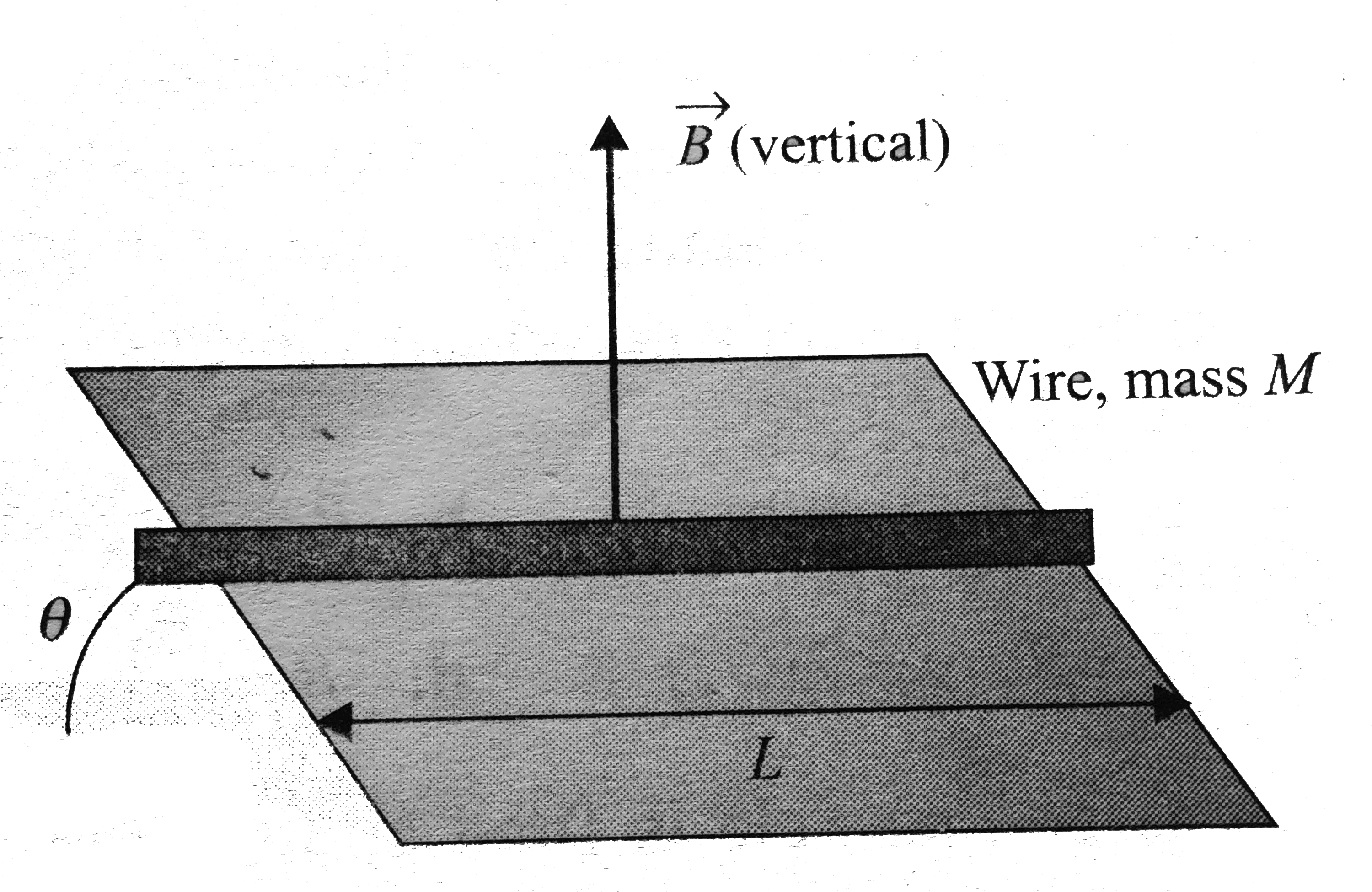If 0.6 mol of electorns flows throutgh a wire in 45 min, what are (a) the total charges that passes through the wire and (b) the magnitude of the current?
To solve the problem, we will break it down into two parts: calculating the total charge that passes through the wire and then calculating the magnitude of the current.
Step 1: Calculate the number of electrons
Given:
- Number of moles of electrons = 0.6 mol
- Avogadro's number = 6.022×1023 electrons/mol
The total number of electrons can be calculated using the formula:
Number of electrons=Number of moles×Avogadro's number
Substituting the values:
Number of electrons=0.6mol×6.022×1023electrons/mol=3.6132×1023electrons
Step 2: Calculate the total charge
The charge of a single electron is given as:
- Charge of an electron = 1.6×10−19 coulombs
The total charge (Q) can be calculated using the formula:
Q=Number of electrons×Charge of an electron
Substituting the values:
Q=3.6132×1023electrons×1.6×10−19C/electron=5.78×104C
Step 3: Calculate the time in seconds
Given:
- Time = 45 minutes
Convert time into seconds:
Time in seconds=45minutes×60seconds/minute=2700seconds
Step 4: Calculate the magnitude of the current
The current (I) can be calculated using the formula:
I=QT
Substituting the values:
I=5.78×104C2700s≈21.4A
Final Answers:
(a) The total charge that passes through the wire is 5.78×104C.
(b) The magnitude of the current is 21.4A.
---
Given:
- Number of moles of electrons = 0.6 mol
- Avogadro's number = 6.022×1023 electrons/mol
Number of electrons=Number of moles×Avogadro's number
Substituting the values:
Number of electrons=0.6mol×6.022×1023electrons/mol=3.6132×1023electrons
The charge of a single electron is given as:
- Charge of an electron = 1.6×10−19 coulombs
Q=Number of electrons×Charge of an electron
Substituting the values:
Q=3.6132×1023electrons×1.6×10−19C/electron=5.78×104C
Given:
- Time = 45 minutes
Time in seconds=45minutes×60seconds/minute=2700seconds
The current (I) can be calculated using the formula:
I=QT
Substituting the values:
I=5.78×104C2700s≈21.4A
(a) The total charge that passes through the wire is 5.78×104C.
Topper's Solved these Questions
- ELECTRIC CURRENT AND CIRCUITBook:CENGAGE PHYSICS ENGLISHChapter:ELECTRIC CURRENT AND CIRCUITExercise:Exercise 5.2
Explore 50 Videos
- ELECTRIC CURRENT AND CIRCUITBook:CENGAGE PHYSICS ENGLISHChapter:ELECTRIC CURRENT AND CIRCUITExercise:Subjective
Explore 29 Videos
- ELECTRIC CURRENT AND CIRCUITBook:CENGAGE PHYSICS ENGLISHChapter:ELECTRIC CURRENT AND CIRCUITExercise:Solved Examples
Explore 12 Videos
- ELECTRIC CURRENT & CIRCUITSBook:CENGAGE PHYSICS ENGLISHChapter:ELECTRIC CURRENT & CIRCUITSExercise:Kirchhoff s law and simple circuits
Explore 15 Videos
- ELECTRIC FLUX AND GAUSS LAWBook:CENGAGE PHYSICS ENGLISHChapter:ELECTRIC FLUX AND GAUSS LAWExercise:MCQ s
Explore 38 Videos
Similar Questions
we often say "a current is going through the wire " What goes through the wire,the charge or the current ?
View SolutionA current of 1.5A flows through a conductor for 2.0s. What amount of charge passes through the conductor ?
View SolutionIf a current of 0.5A flows through a metallic wire for 2 hours, then how many electrons would flow through the wire ?
View SolutionIf a current of 0.5A flows through a metallic wire for 2 hours, then how many electrons would flow through the wire ?
View SolutionThe electric current passes through a metallic wire produces heat because of :
View SolutionA constant current of 4A passes through a wire for 8s. Find total charge flowing through that wire in the given time interval.
View SolutionIf a current of one ampere flows through a metal wire for one hour, how many electrons would flow through the wire in 2 seconds?
View SolutionCurrent through a wire decreases from 4 A to zero in 10sec. Calculate charge flown through the wire during this interval of time.
View SolutionA straight peice of conducting wire with mass M and length L is placed on a frictionless incline tilited at an angle θ from the horizontal (as shown in fig) There is a uniform. Vertical magnetic field at all points (produced by an arrangement of magnets not shown in fig. To keep the wire from sliding down the incline, a voltage source is

attached to the ends of the wire. When just the right amount of current flows through the wire, the wire remains at rest. Determine the magnitude and direction of the current in the wire that will cause the wire to remain at rest.
View SolutionCurrent passing through a wire decreases linearly from 10A to 0 in 4s. Find total charge flowing through the wire in the given time interval.
View Solution